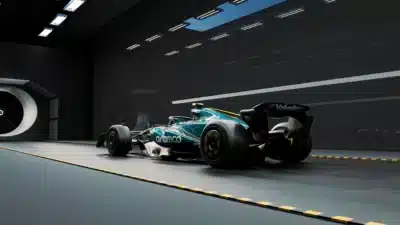If you are involved in car design, having the right software is essential to bring your ideas to life efficiently and accurately. Car design software offers tools for sketching, 3D modeling, and simulation that help you develop and refine vehicle concepts.
The best car design software allows you to create detailed and realistic models while testing your designs against real-world conditions. Choosing the right program can impact your workflow, creativity, and the quality of your final product. This article will guide you through seven top options to consider.
1) Autodesk Alias
Autodesk Alias is a professional-grade software designed specifically for automotive and industrial design. If you work in car design, Alias offers advanced tools for sketching, 3D modeling, and Class-A surface creation to help you develop precise, smooth surfaces that meet industry standards.
The software supports concept modeling and detailed vehicle visualization, making it ideal for creating both early design ideas and final styling. You can easily import and export popular file formats, which allows smooth collaboration with other design and engineering tools.
Alias provides a suite of options tailored to different design stages, including concept, surfacing, and visualization. It is widely used by vehicle designers and manufacturers worldwide, reflecting its strong position in automotive CAD.
By using Autodesk Alias, you gain access to an extensive set of tools that help translate your creative concepts into complex, high-quality automotive surfaces. Its combination of flexibility and precision makes it a key choice for professional car designers.
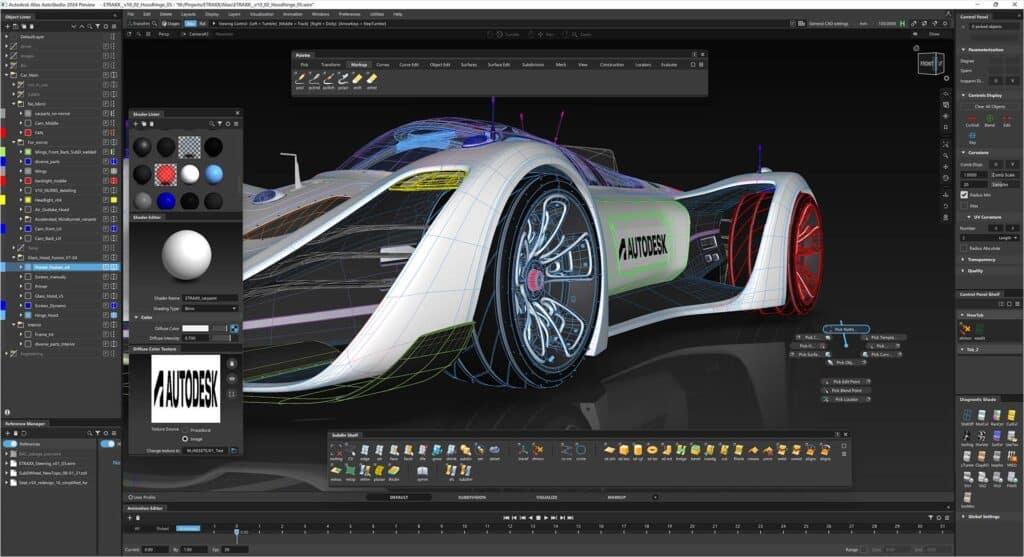
2) Blender
Blender is a free and open-source 3D modeling software widely used for car design. It offers a multi-functional design suite with tools for polygon mesh and NURBs modeling, allowing you to create detailed and precise car models.
You can use Blender for both concept modeling and detailed sculpting. Its flexibility makes it suitable for early-stage creativity and complex surface design.
The software is accessible even if you have limited experience in 3D modeling. Blender’s user-friendly interface lets you work efficiently without compromising on advanced functionalities.
Blender also supports rendering and animation, which helps you visualize your designs realistically. This can be useful for presentations and refining the aesthetics of your car model.
If you want a powerful, cost-effective tool for automotive design with a strong community for support, Blender is a solid choice. It balances creative freedom with technical precision effectively.
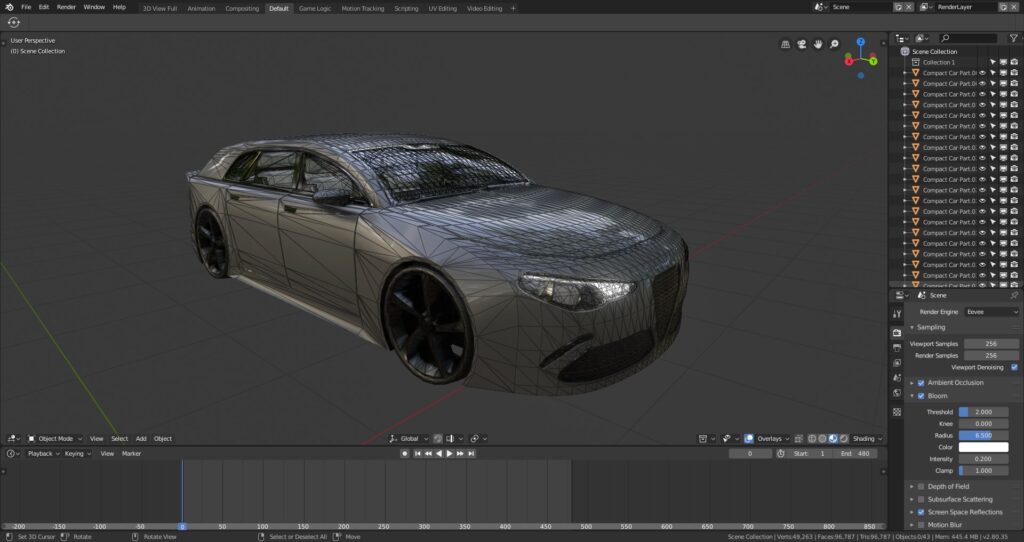
3) CATIA
CATIA is a leading software widely used in automotive design. It offers advanced surface modeling tools that help you create both aesthetically appealing and aerodynamically efficient car bodies.
With CATIA, you can handle complex assemblies and detailed engineering tasks. The software supports multi-platform use, making it suitable for collaboration across different teams.
You will find CATIA especially useful for integrating design with manufacturing processes. Its capabilities extend beyond modeling, including simulation and analysis features tailored for automotive applications.
This software is often chosen by professionals for its precision and depth. If your goal is to work on advanced car design projects, CATIA provides a comprehensive environment to bring your ideas to life.
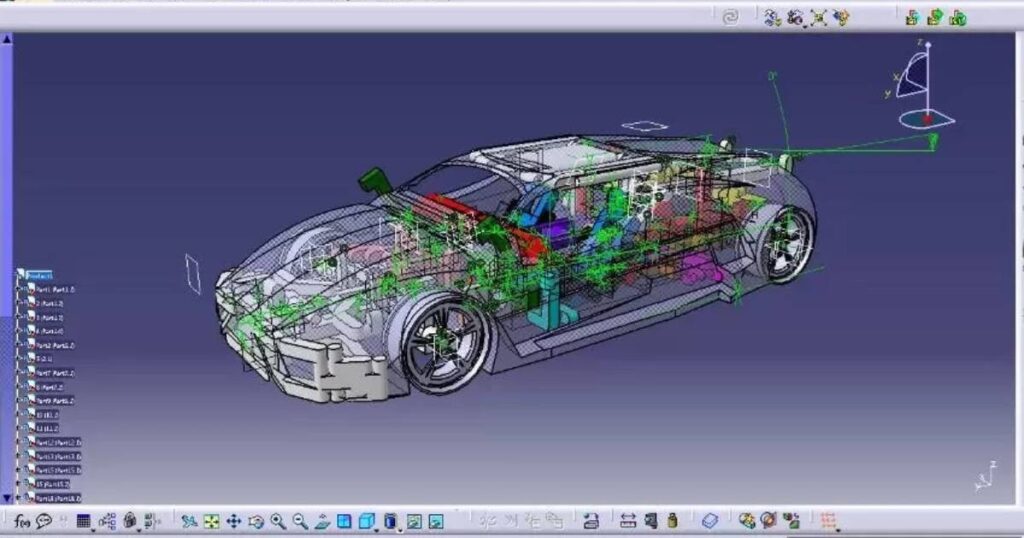
4) Autodesk VRED
Autodesk VRED is a leading 3D visualization software widely used in the automotive industry. You can create high-quality, photorealistic renderings and interactive presentations of your 3D car models.
The software supports realistic lighting and material settings, helping you evaluate design details clearly. It is designed for both designers and engineers to review and improve your concepts efficiently.
With VRED, you can produce virtual prototypes that closely mimic real-world products. This allows you to identify potential design issues early in development.
VRED also offers tools for collaborative design reviews, making it easier to communicate your ideas within teams or with clients. Its compatibility with other Autodesk products enhances your workflow.
You can purchase VRED through Autodesk’s official store or authorized resellers. The software is updated regularly, keeping it aligned with the latest industry standards.
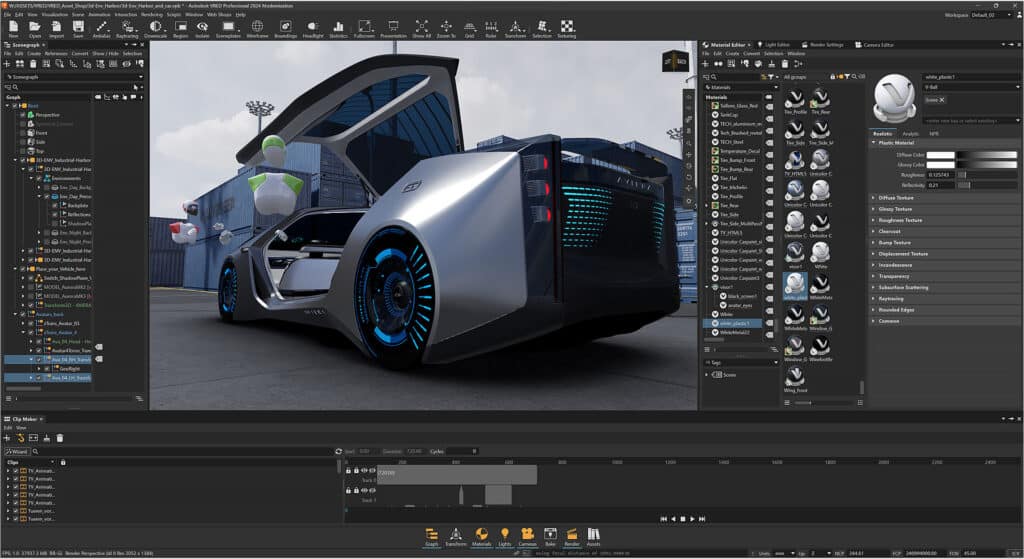
5) 3DS MAX
3DS MAX is a versatile software widely used for 3D modeling in automotive design. It provides robust tools that help you create detailed and realistic car bodies.
You can customize your designs based on existing car or truck models, making it easier to start projects or explore new ideas. The software supports various file formats, allowing smooth integration with other design tools.
While 3DS MAX is user-friendly for those familiar with 3D modeling, it still requires some technical skill to fully utilize its capabilities. It offers advanced rendering and animation features that bring your car models to life.
This software is well-suited for both conceptual design and visualization, helping you present your ideas clearly to clients or stakeholders. Its compatibility with industry standards makes it a solid choice for automotive design professionals.
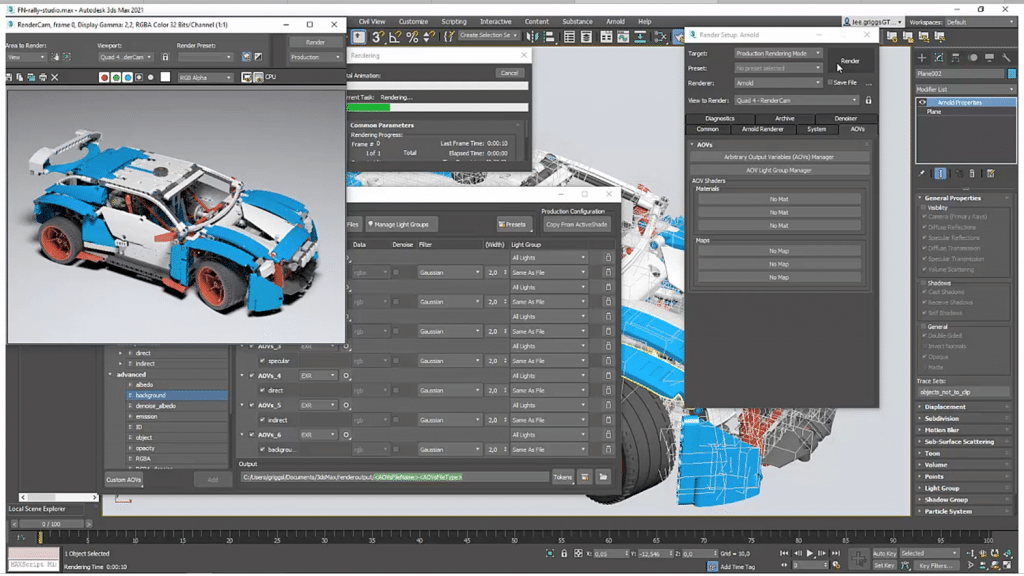
6) Adobe Substance 3D
Adobe Substance 3D is a powerful toolset designed for 3D modeling, texturing, and rendering. It allows you to create detailed car designs with realistic textures and materials.
The software integrates smoothly with popular car design programs like CATIA, Rhino 3D, VRED, and 3DExcite Deltagen. This helps you streamline your workflow by combining modeling and rendering in a single environment.
You can use Adobe Substance 3D to sculpt and paint directly on your 3D models, either on a desktop or in VR. This flexibility gives you more control over your car’s surface details and finishes.
The toolset is priced reasonably and offers a wide variety of assets for your projects. It works well for designers who want to advance beyond basic modeling to more refined, professional-grade visuals.
If your work demands precise textures and immersive visualization, Adobe Substance 3D provides the necessary tools to elevate your car design process.
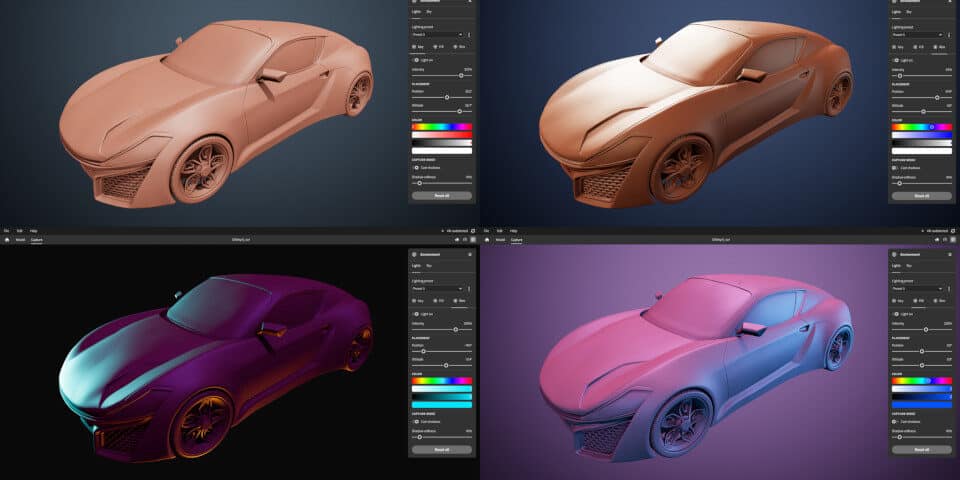
7) FreeCAD
FreeCAD is a free, open-source parametric 3D modeling software that works on Windows, macOS, and Linux. It is designed to let you create precise models for real-life objects, including cars.
The parametric approach means you can easily modify your designs by going back and adjusting parameters without starting over. This flexibility is useful when you want to refine your car design multiple times.
FreeCAD supports many file formats like STL, OBJ, and DXF, which makes it compatible with a range of other design and manufacturing tools. It has a strong community, so you can find resources and tutorials to help you learn.
While it may have a steeper learning curve than simpler CAD tools, FreeCAD offers advanced features suitable for automotive design projects. It is a good choice if you want a capable, no-cost solution with professional capabilities.
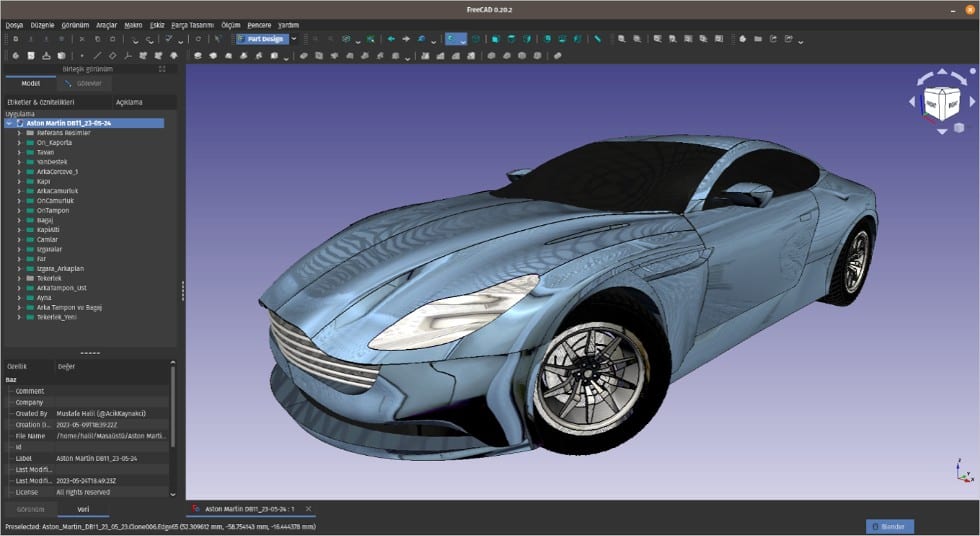
Key Features to Consider in Car Design Software
Choosing the right car design software means focusing on how easily you can use the tool, its strength in creating detailed 3D models, how well it connects with engineering processes, and whether it supports teamwork. Each of these areas affects how efficiently and accurately you can bring your car designs to life.
User Interface and Usability
Your software should have a clear and intuitive interface to reduce the learning curve. Look for tools that offer customizable workspaces and straightforward navigation to help you focus on design rather than figuring out controls.
Ease of use is crucial, especially if you’re new to car design software. Features like drag-and-drop elements, quick access toolbars, and comprehensive tutorials or built-in guides make the design process smoother.
Also, responsive software that runs well on your hardware without lag will improve your overall experience, letting you work faster and with less frustration.
3D Modeling Capabilities
3D modeling is the core of modern car design software. You need parametric modeling tools that allow precise control over geometry while being flexible enough to make quick changes.
Pay attention to the software’s ability to support surface modeling and solid modeling, both important for accurately representing complex car shapes.
Rendering quality matters too. High-resolution rendering lets you visualize materials and lighting in realistic ways, helping you assess aesthetics and aerodynamics earlier.
Built-in simulation features for airflow or stress testing improve the design’s functional evaluation without switching to separate programs.
Compatibility With Vehicle Engineering Tools
Your design software should integrate seamlessly with engineering applications used for mechanical, electrical, and structural analysis.
Check if the software exports and imports common file formats like STEP, IGES, or CATIA for smooth data exchange.
Compatibility with CAD and CAM software helps bridge the gap between design and manufacturing, especially when teams within a software development company need to ensure seamless transitions between stages.
You want to ensure that your design environment supports collaboration with engineers who work on different vehicle systems, allowing your designs to be validated against real-world constraints.
Collaboration Functions
In car design, multiple teams often work together, making collaboration features essential.
Look for software offering cloud-based project sharing, version control, and real-time feedback to keep everyone aligned and prevent miscommunication.
Built-in commenting and markup tools allow designers and engineers to review and suggest changes without exporting files back and forth.
Some software supports integration with project management platforms, which can help track progress and coordinate between design, engineering, and marketing teams effectively.
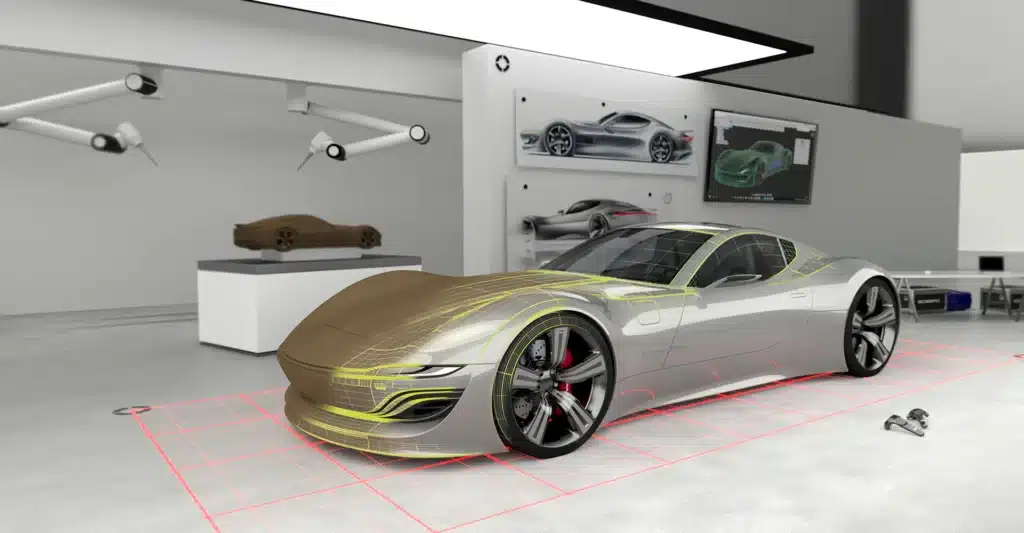
How Car Design Software Impacts the Automotive Industry
Car design software plays a crucial role in improving automotive development processes. It helps you reduce time to market, improve design accuracy, and test concepts virtually before physical production. These capabilities directly affect your ability to create innovative, reliable vehicles efficiently.
Accelerating Product Development
Using car design software allows you to speed up product development by streamlining multiple stages. Instead of relying on manual sketches or physical models, you work digitally from the start. This enables faster iterations and easier modifications to your designs.
You can collaborate with engineering and manufacturing teams seamlessly, sharing precise CAD files instantly. Integration with project management and resource planning tools also reduces delays caused by miscommunication or scheduling conflicts. The software helps shrink development cycles and ultimately lets you launch products quicker.
Enhancing Design Precision
Precision is one of the primary advantages you gain from design software. Programs like Autodesk Alias and SolidWorks offer detailed modeling with exact measurements, ensuring components fit perfectly during assembly. You minimize human errors common in manual drafting.
Advanced tools provide real-time feedback on aerodynamics, materials stress, and performance impacts as you design. This lets you make informed decisions early, reducing the need for costly corrections later. The high level of accuracy supports not just aesthetics but functional engineering requirements essential to your final product.
Enabling Virtual Prototyping
Virtual prototyping through design software lets you test and validate your vehicle concepts without creating physical models initially. You simulate crashes, stress tests, and aerodynamics in a controlled digital environment.
This reduces material costs and shortens testing phases. With 3D visualization, you can identify design flaws before they become expensive problems. Virtual prototyping also supports additive manufacturing by preparing models suited for 3D printing, further accelerating iteration cycles and innovation in your projects.
- 9shares
- Facebook0
- Pinterest9
- Twitter0

